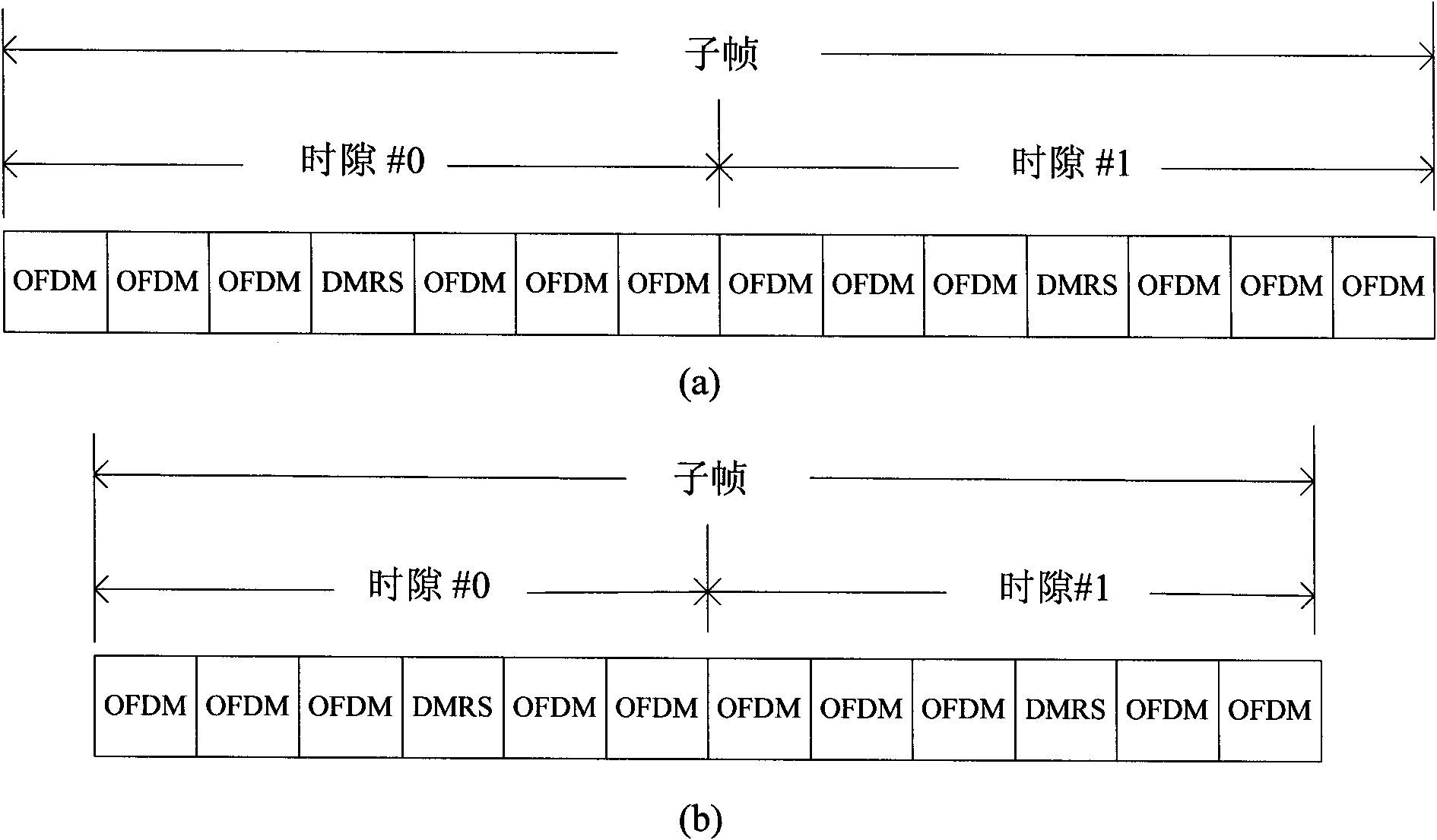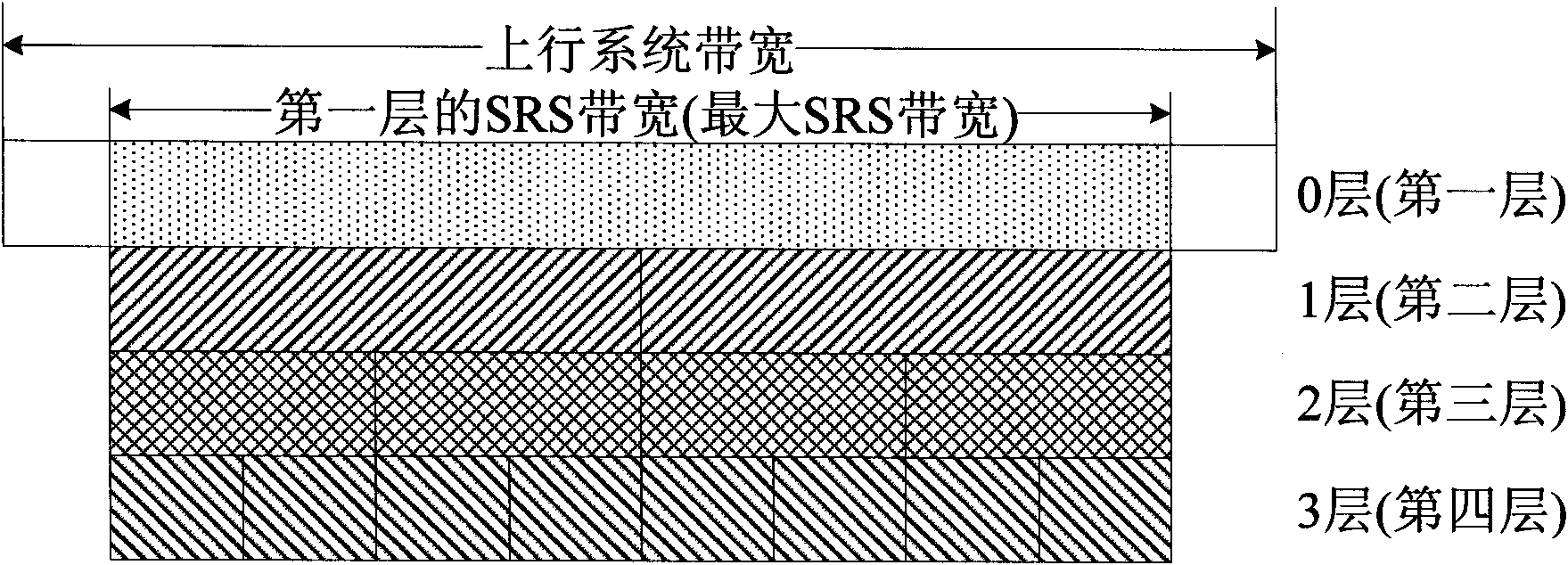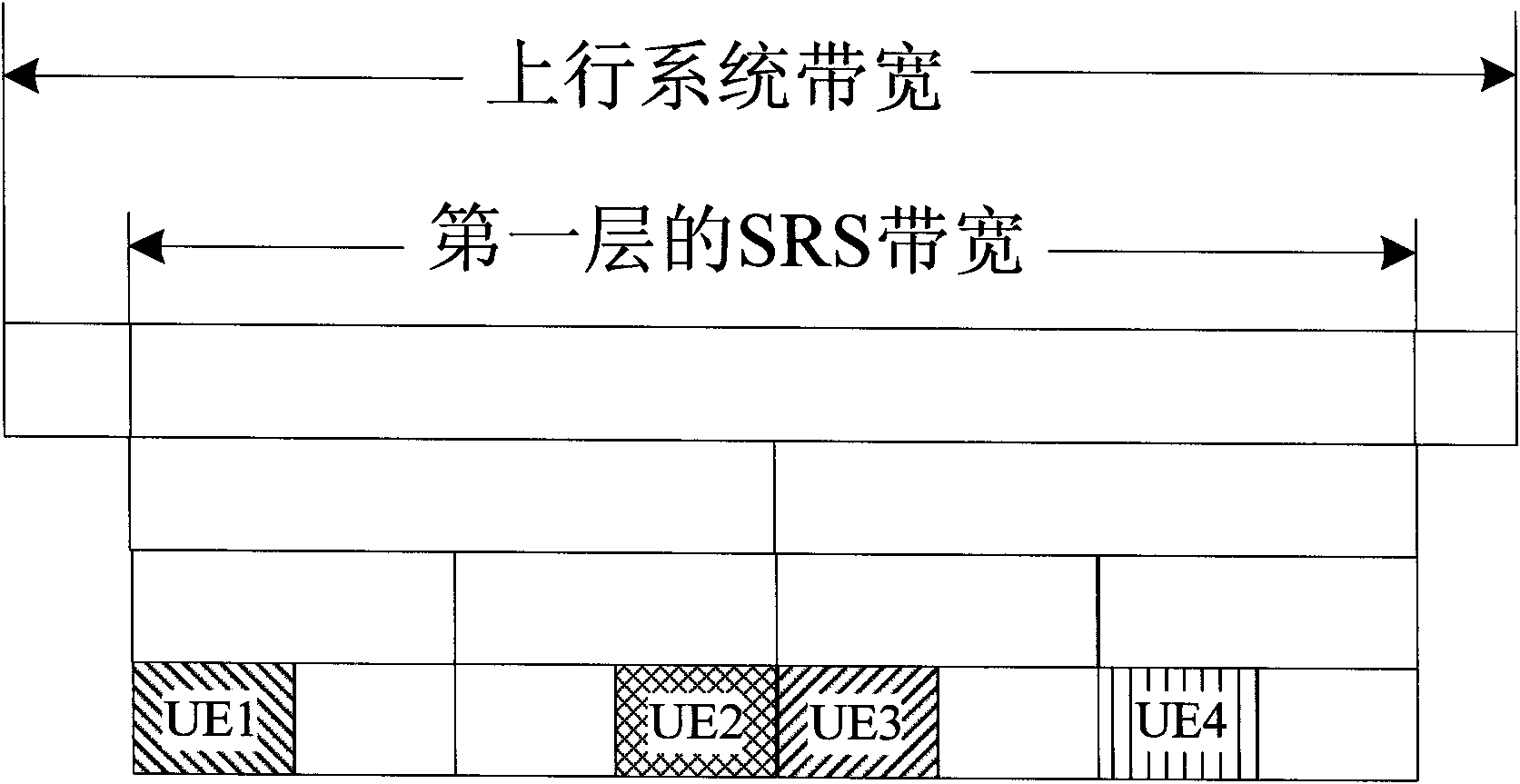Multi-antenna transmission method of measurement reference signals, terminal and base station
A technology for measuring reference signals and transmission methods, which is applied in the field of communication and can solve problems such as the decline in the number of users
- Summary
- Abstract
- Description
- Claims
- Application Information
AI Technical Summary
Problems solved by technology
Method used
Image
Examples
example 1
[0158] When a terminal configured with multiple antennas has only one antenna to send SRS at the same time, that is, when the terminal is in the single-antenna transmission mode,
[0159] When the antenna selection is disabled, the terminal sends SRS on a fixed antenna;
[0160] When antenna selection is enabled,
[0161] A) If the terminal can support up to 2 transmit antennas, use the following method to select the antenna and send the SRS:
[0162] When the frequency hopping of SRS in the frequency domain is not enabled, the antenna index a(n SRS ) is calculated as: a(n SRS ) = n SRS mod2;
[0163] When SRS frequency hopping in the frequency domain is enabled, the antenna index a(n SRS ) is calculated as:
[0164]
[0165] in no matter N b take what value, Both are 1, N bThe number of branches corresponding to the b layer when the SRS bandwidth tree structure is allocated, as shown in Table 1 to Table 4, n SRS is the sending counter of SRS, B SRS is the ...
example 2
[0169] When a terminal configured with multiple antennas has only one antenna to send SRS at the same time, that is, when the terminal is in single-antenna transmission mode:
[0170] When the antenna selection is disabled, the terminal sends SRS on a fixed antenna;
[0171] When antenna selection is enabled,
[0172] 1) If the terminal can support up to 4 transmitting antennas, the following methods are used for antenna selection and transmission:
[0173] When the frequency hopping of SRS in the frequency domain is not enabled, the antenna index a(n SRS ) is calculated as: a(n SRS ) = n SRS mod4;
[0174] When SRS frequency hopping in the frequency domain is enabled, the antenna index a(n SRS ) is calculated as:
[0175]
[0176]
[0177] in no matter N b take what value, Both are 1, N b The number of branches corresponding to the b layer when the SRS bandwidth tree structure is allocated, as shown in Table 1 to Table 4, n SRS is the sending counter of ...
example 3
[0180] Orthogonal resources are allocated to different antennas by code division multiplexing (CDM), time division multiplexing (TDM), or frequency division multiplexing (FDM), or any combination of the above, and each antenna transmits on the orthogonal resources Uplink SRS.
[0181] Further, the resource allocation mode is configured by the base station to the terminal through high-level signaling or downlink control signaling;
[0182] Further, before allocating orthogonal resources for different antennas, the base station (eNB) notifies the terminal equipment (UE) of resources for sending uplink SRS by each antenna through high-level signaling or downlink control signaling; or, the eNB transmits uplink SRS resources through high-level signaling or downlink control signaling Signaling notifies the UE of resources and resource allocation methods for some antennas to send uplink SRSs, and the UE determines resources for sending SRSs for each antenna according to the configure...
PUM
 Login to View More
Login to View More Abstract
Description
Claims
Application Information
 Login to View More
Login to View More - R&D
- Intellectual Property
- Life Sciences
- Materials
- Tech Scout
- Unparalleled Data Quality
- Higher Quality Content
- 60% Fewer Hallucinations
Browse by: Latest US Patents, China's latest patents, Technical Efficacy Thesaurus, Application Domain, Technology Topic, Popular Technical Reports.
© 2025 PatSnap. All rights reserved.Legal|Privacy policy|Modern Slavery Act Transparency Statement|Sitemap|About US| Contact US: help@patsnap.com



